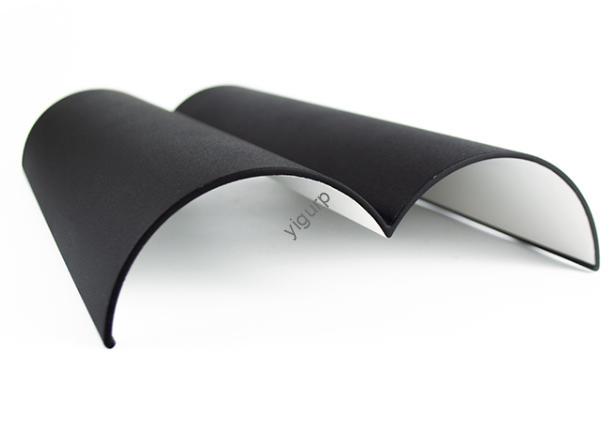Bending molding is a key process in sheet metal processing that shapes materials into desired angles and forms using pressure. It’s popular because it’s cost-effective, schnell, and doesn’t require mold opening—perfect for both prototyping and mass production. But to get the best results, choosing the right material is crucial. This guide breaks down the top materials for bending molding, ihre Profis, Verwendung, and key considerations to help you make informed decisions.
An Overview of Bending Molding: Wie es funktioniert
Before diving into materials, let’s quickly understand how bending molding operates. Der Prozess beruht auf Plastische Verformung—applying pressure to a sheet metal until it bends without breaking. For success, two factors matter most: the material’s Duktilität (its ability to stretch without cracking) and proper bending parameters (like height and radius).
A basic rule for bending height: it should be at least 2× the material’s thickness + the bending radius. Zum Beispiel, if you’re using a 2mm thick steel sheet with a 3mm bending radius, the minimum bending height is 2×2 + 3 = 7mm. This prevents twisting during forming. Auch, the bending radius must be larger than the material’s minimum bending radius (a value that varies by material) to keep the bent part strong.
Top Materials for Bending Molding: Profis, Verwendung, and Data
Not all materials work for bending molding—only those with good ductility. Below are the most common options, organized with key details to help you compare.
| Material | Schlüsseleigenschaften | Minimum Bending Radius (for 1mm thick sheet) | Typische Anwendungen | Fall der realen Welt |
| Stahl | Hohe Stärke, niedrige Kosten, Gute Duktilität | 1.5mm | Construction metal parts, Unterhaltungselektronik, Kfz -Rahmen | A car manufacturer uses 1.2mm thick steel sheets to bend door frames. The parts handle daily wear without bending or breaking, and steel keeps production costs 30% lower than using titanium. |
| Aluminium | Leicht (1/3 das Gewicht des Stahls), korrosionsbeständig, Herzöge | 1.0mm | Transport (Fahrräder, Flugzeugteile), Verpackung (Aluminiumdosen), Outdoor -Vorrichtungen | A bike brand uses 0.8mm aluminum sheets to bend handlebars. The lightweight material cuts the bike’s total weight by 15%, and its corrosion resistance means the handlebars don’t rust in rain. |
| Kupfer | Ausgezeichnete elektrische Leitfähigkeit, hohe Duktilität, formbar | 0.8mm | Electrical connections (Kabel, Leiterplatten), Klempnerteile | An electronics company bends 0.5mm copper sheets into connectors for smartphones. The copper’s conductivity ensures fast signal transfer, and its ductility lets the connectors fit into small phone casings. |
| Titan | Ultrahohe Stärke, korrosionsbeständig (even in chemicals), Biokompatibel | 2.0mm | Luft- und Raumfahrt (rocket parts), Medizinprodukte (Implantate), Meeresausrüstung | A medical firm uses 1.0mm titanium sheets to bend hip implants. Titanium’s strength supports body weight, and its biocompatibility means it doesn’t react with human tissue. |
Key Factors to Consider When Choosing Bending Molding Materials
Choosing a material isn’t just about its properties—you need to match it to your project’s needs. Here are four critical factors:
- Anwendungsanforderungen: If your part needs to conduct electricity (like a wire connector), Kupfer ist die beste Wahl. Für leichte Teile (like airplane components), Aluminium oder Titan works better. For low-cost, hochfeste Teile (like construction brackets), Stahl ist ideal.
- Umweltbedingungen: Will the part be exposed to water or chemicals? Aluminium Und Titan Korrosion widerstehen, so they’re great for outdoor or marine use. Stahl may need a coating (like paint or zinc) Rost zu verhindern.
- Cost and Availability: Stahl is the cheapest and most easy-to-find option—perfect for large-scale production. Titan is expensive (about 5× the cost of steel) but worth it for high-performance parts (wie Luft- und Raumfahrtkomponenten).
- Bending Difficulty: Kupfer Und Aluminium are easy to bend—they require less pressure and are less likely to crack. Stahl Und Titan are harder, so you may need specialized equipment (like a high-pressure bending machine) für dicke Blätter.
Yigu Technology’s Perspective on Bending Molding Materials
Bei Yigu Technology, we focus on matching clients with the right bending materials to balance performance and cost. For most consumer goods (like electronics cases), Wir empfehlen Aluminium—it’s lightweight, korrosionsbeständig, und kostengünstig. Für Industrie -Teile (like construction beams), Stahl is our go-to for its strength and low cost. Für High-End-Projekte (wie medizinische Implantate), Wir verwenden Titan to meet strict safety and durability standards. We also help clients optimize bending parameters (like radius and height) to reduce waste—ensuring every part meets quality requirements.
FAQ About Materials for Bending Molding
1. Can I use stainless steel for bending molding?
Ja! Stainless steel is a type of steel with added chromium, korrosionsresistenter machen. It has good ductility, so it’s great for parts like kitchen sinks or outdoor furniture. Its minimum bending radius is about 1.8mm (for 1mm thick sheets).
2. Is it possible to bend very thin sheets (0.1mm dick) of these materials?
Ja, but you need to be careful. Dünne Blätter (like 0.1mm aluminum or copper) are easy to bend but may wrinkle. Use a bending machine with soft jaws (to avoid damaging the sheet) and keep the bending radius small (Z.B., 0.5MM für Aluminium) für beste Ergebnisse.
3. Which material is best for bending parts that need to be painted?
Stahl ist die beste Wahl. It adheres well to paint and coatings, and the paint adds extra rust protection. Aluminum can also be painted, but it may need a primer first to help the paint stick. Copper and titanium are less commonly painted, as their natural properties (like conductivity or biocompatibility) may be affected.
